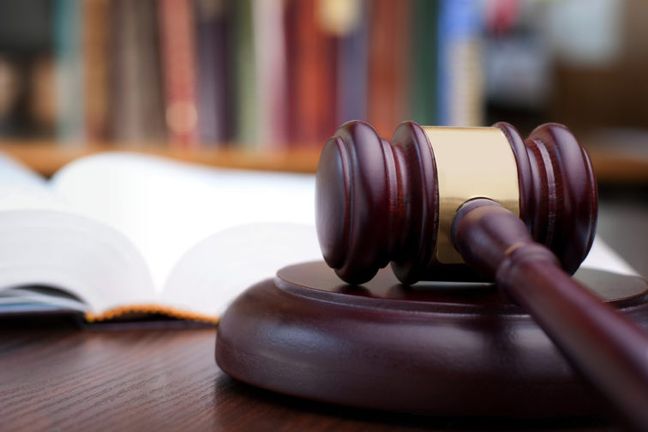As defense practitioners, we have all been (or will likely be) in the situation where an overzealous plaintiff lawyer seeks to depose your corporate client’s person most qualified and individual employees, corporate officers, or owners. Often times, the defense lawyer will object to the deposition and meet and confer with plaintiff’s counsel. When meet and confer efforts fail, plaintiff’s counsel will bring a motion to compel the depositions. As the moving party, plaintiff will get the first shot at framing the issues and arguments for the judge. Naturally, defense counsel will then be playing from behind in drafting an opposition and attempting to reframe the issues.
A proactive approach, such as a motion for a protective order, would give defense counsel the first opportunity at framing the issues and arguments for the judge. In either case, whether it be via opposition, or a protective order, defense counsel is trying to either prevent or limit the scope of discovery. Typically, the party who strikes first by taking a common sense and practical approach will prevail. Which is why a motion for a protective order is more practical than an opposition when it comes to depositions.
Authority for Protective Order
Under California Code of Civil Procedure §2025.420, the court, for good cause shown, may make any order that justice requires to protect any party, deponent, or other natural person or organization from unwarranted annoyance, embarrassment, or oppression, or undue burden and expense. “One of the powers which has always been recognized as inherent in courts, which are protected in their existence, their powers and jurisdiction by constitutional provisions, has been the right to control its order of business and to so conduct the same that the rights of all suitors before them might be safeguarded.” (Rice v. Superior Court (1982) 136 Cal.App.3d 81, 90 (internal citations omitted).) “We have often recognized the ‘inherent powers of the court … to insure the orderly administration of justice.”’ (Walker v. Superior Court (1991) 53 Cal. 3d 257, quoting Hays v. Superior Court (1940) 16 Cal.2d 260, 264.)
California law is clear that the discovery act, while broad, does not support fishing expeditions that “place more burden on the adversary than the value of the information warrants.” (Greyhound Corp. v. Superior Court (1961) 56 Cal. 2d 355, 385.) Thus, in considering whether discovery is appropriate, “courts must weigh the relative importance of the information sought against the hardship which its production might entail.” (Id., at 384.) Moreover, discovery is meant to take the “game element” out of litigation, not to inject it into the process. (See, Rutter Group, California Practice Guide, Civil Procedure Before Trial, ¶ 8:1; Greyhound Corp. v. Superior Court (Clay) (1961) 56 Cal.2d 355, 376; Emerson Elec. Co. v. Superior Court (Grayson) (1997) 16 Cal.4th 1101, 1107).)
Practical Considerations
There are often practical considerations one must understand before seeking protection by way of a protective order. The first of which is whether the protective order has merit. Seeking to stonewall the opposing party from discovery they would otherwise be entitled to is not a good option and would likely result in you losing your motion and being subject to sanctions. However, seeking a protective order because the opposing party is engaging in duplicative, burdensome, and harassing discovery is proper grounds for a protective order. Further, consider whether the opposing party could obtain the exact same information by way of a different discovery device, such as special interrogatories.
Additionally, look to the timing of the deposition notice. For example, plaintiff may have sued your corporate client and the individual who owns the corporation. Before your dispositive motion seeking to remove the individual from the case is heard, plaintiff attempts to not only take the deposition of the person most qualified for the corporation, but also of the individual. Plaintiff’s attempt at taking the deposition of the individual before the individual could be removed from the case is a good reason for a protective order. At a minimum, the protective order could request the court order the deposition take place after the dispositive motion is heard, assuming the individual remains a named party.
Conclusion
When appropriate, look to take a proactive approach in preventing and/or limiting the scope of discovery by way of a motion for a protective order. This will give you the first opportunity to frame the issues and arguments for the judge. Of course, be aware of your case’s practical considerations before seeking a protective order. And, always frame your meet and confer efforts to make your client appear to take the more reasonable position regardless of the legal authority to support your clients position.

 Author: Christopher Schon
Author: Christopher Schon
 Cannabis Workers Allege Quota to Trim 4 Pounds a Day Violates the California Labor Code
Cannabis Workers Allege Quota to Trim 4 Pounds a Day Violates the California Labor Code
 The Ninth Circuit Reminds Us: Every Word Matters
The Ninth Circuit Reminds Us: Every Word Matters
 NO WAY, PRO SE! The Consequences of Abusing the Judicial System as a Pro Se Litigant in Colorado
NO WAY, PRO SE! The Consequences of Abusing the Judicial System as a Pro Se Litigant in Colorado
 Victim of Financial Mismanagement or Unlawful Retaliation? New Jersey City University Program Founder Claims School Retaliated After Reporting Alleged Sexual Harassment
Victim of Financial Mismanagement or Unlawful Retaliation? New Jersey City University Program Founder Claims School Retaliated After Reporting Alleged Sexual Harassment
 “Real Housewives” Gets a Reality Check
“Real Housewives” Gets a Reality Check
 Missing a Chapter: Insufficiency of Expert Deposition Testimony in Medical Malpractice Litigation
Missing a Chapter: Insufficiency of Expert Deposition Testimony in Medical Malpractice Litigation
 Crash Course: Why Summary Judgment Misses the Mark in Illinois Multi-Cause Limousine Crash Collision
Crash Course: Why Summary Judgment Misses the Mark in Illinois Multi-Cause Limousine Crash Collision
 Bitter Truths: Lead, Cadmium, and Defective Pleadings in California Chocolate Class Action
Bitter Truths: Lead, Cadmium, and Defective Pleadings in California Chocolate Class Action
 The Law of Unintended Consequences: Including Insurance Brokers in Litigation Strategy Communication May Waive the Attorney-Client Privilege
The Law of Unintended Consequences: Including Insurance Brokers in Litigation Strategy Communication May Waive the Attorney-Client Privilege
 Survival Actions in California: When a Tortious Act Causes Death, Who Can Recover What?
Survival Actions in California: When a Tortious Act Causes Death, Who Can Recover What?
 Review of Recoverable Damages in Wrongful Death Actions in California
Review of Recoverable Damages in Wrongful Death Actions in California
 Going the Distance with Requests for Admissions
Going the Distance with Requests for Admissions
 California’s Post-Judgment Satisfaction Procedure
California’s Post-Judgment Satisfaction Procedure
 Beginning From the End: Post Trial Proceedings in California
Beginning From the End: Post Trial Proceedings in California
 Defending the Mild Traumatic Brain Injury Case in California
Defending the Mild Traumatic Brain Injury Case in California
 Using the Sword – Offers of Judgment in Nevada
Using the Sword – Offers of Judgment in Nevada
 Tis’ the Season for Social Host Liability in California
Tis’ the Season for Social Host Liability in California